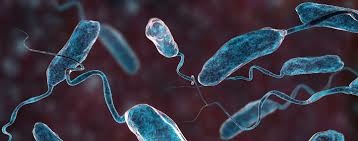According to Dr. Duong Thi Ngoc Lan from the Nutrition Consultation Clinic at the University of Medicine and Pharmacy Hospital in Ho Chi Minh City, white meat typically refers to poultry like chicken, duck, and turkey. Fish and seafood are also often included in this group.
The main difference between white meat and red meat (beef, pork, lamb) is the lower myoglobin content, resulting in a lighter color and typically less saturated fat. Consequently, white meat is a lean protein source that is easy to digest, puts less strain on metabolism, and is beneficial for cardiovascular health and weight management.
Fatty fish like salmon, sardines, and herring are rich in omega-3 fatty acids, which support brain development and protect the cardiovascular system. For children, especially during the complementary feeding stage from 6 to 23 months, animal-sourced foods like meat, fish, eggs, and milk are crucial because they provide iron, zinc, and vitamin B12—micronutrients difficult to replace with plant-based alternatives.
Furthermore, white meat is tender, easy to chew and swallow, and low in fiber, making it suitable for introducing solids. When choosing fish for children, prioritize low-mercury options like salmon, cod, tilapia, and shrimp, which are both safe and nutrient-rich.
 |
Relying solely on white meat without supplementation from other sources can lead to iron or vitamin B12 deficiencies over time. Photo: Bui Thuy |
However, many people wonder if a white meat-only diet provides sufficient nutrients. Dr. Lan explains that compared to red meat, white meat is lower in calories and cholesterol, contains more lean protein, and offers additional omega-3s (in fish), making it heart-healthy and suitable for those watching their weight.
However, red meat is a source of heme iron, vitamin B12, and zinc—essential nutrients for red blood cell production, preventing anemia, and boosting immunity. A diet solely of white meat without supplementation can lead to iron or vitamin B12 deficiencies, especially in pregnant women and growing children.
Therefore, a balanced diet is key: combining white meat, fish, eggs, milk, legumes, green vegetables, and maintaining a small amount of lean red meat 1-2 times a week (less than 500 g per week).
When choosing and preparing white meat, consumers should purchase meat from reputable sources with veterinary inspection. Fresh poultry should have a light pink color, firm and elastic texture, and no unusual odor or stickiness. Fresh fish should have clear, bright eyes, red gills, and firm flesh; shrimp and squid should have bright shells and firm meat.
When cooking, ensure thorough cooking to eliminate bacteria; avoid eating raw or undercooked meat. Methods like steaming, boiling, and light stewing help retain nutrients and prevent the formation of harmful substances. Deep frying or charring increases unhealthy fats and harmful compounds, so these methods should be limited. Ginger, lemongrass, and garlic can be used to neutralize fishy odors and aid digestion.
My Y












